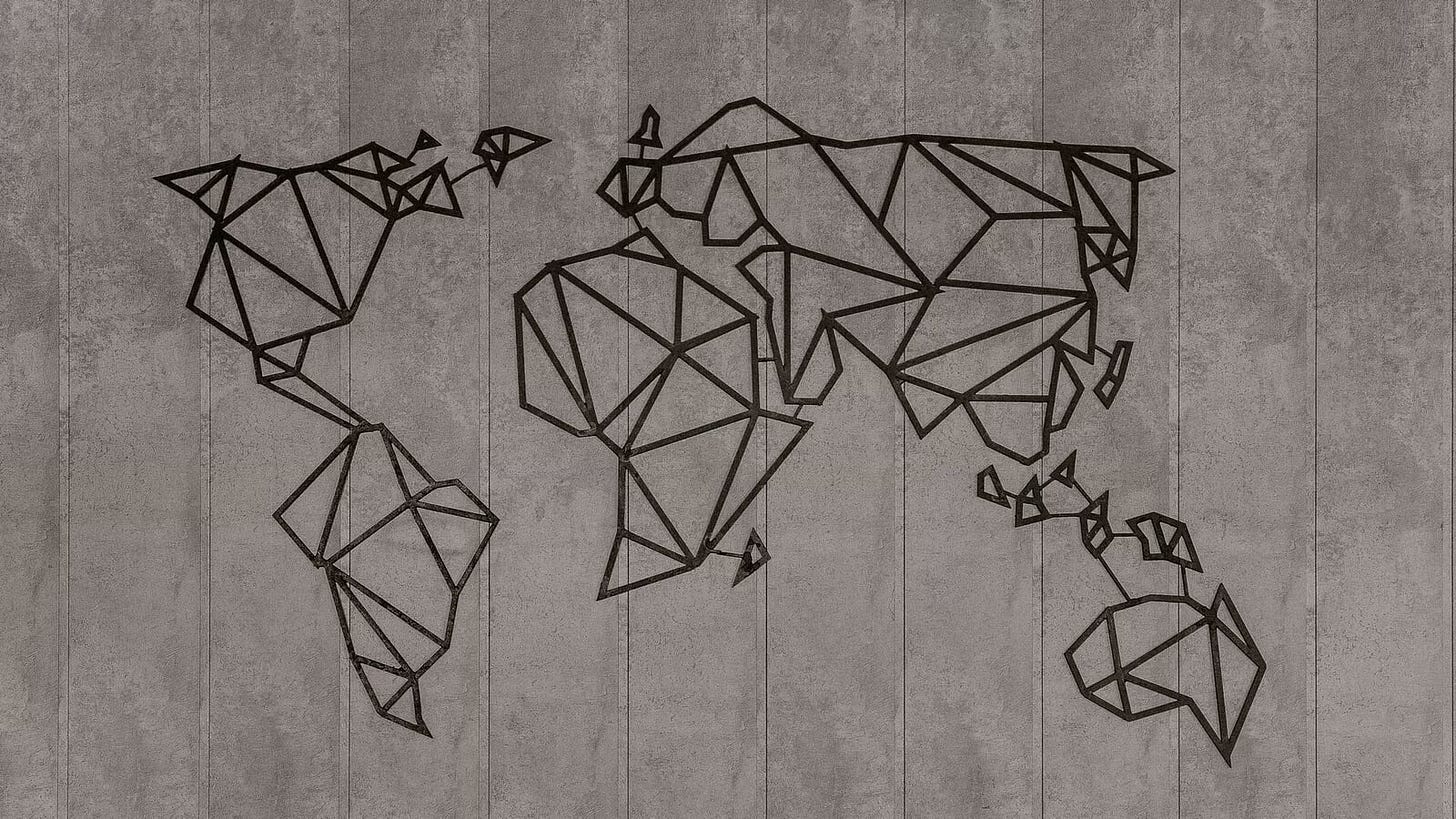If You Want to Find (or Fix) a Blind Spot, Try to Draw a Map
Why a simple drawing is often more powerful for your business than a good story.
Reading a post on project management strategy recently, I came across an idea that stood out. In an aside on the cost- and time-bloating tendency among firms to build things in-house that could be readily acquired as commodities, the author – Simon Wardley – offered an interesting speculation.
More often than not, I come across corporations custom-building stuff, which is a commodity. But why? Alas, most organisations tend to run on stories, and the problem with stories is we associate good leaders with good storytellers. When you challenge someone’s story, you are, in reality, saying, “You’re not a good leader.” This never ends well. Hence, it’s quite easy for stories full of custom-built components to never get challenged.
As something of the resident “narrative guy” at radical – where I’m often arguing to clients that they’re neither paying enough attention to nor doing enough with the stories that are told within and about their organizations, this caught my attention. My default position is that most leaders underutilize narrative as a tool for making sense of complexity and leading through uncertainty.
But Wardley wasn’t arguing against stories per se. He was arguing that organizations shouldn’t operate according to bodies of received wisdom that might contain unexplored and unchallenged assumptions propping up established ways of doing and thinking. And those assumptions can definitely ossify into “stories” about how systems must work and how things necessarily have to be done.
A surprisingly effective and practical countermeasure? Visual thinking.
I first encountered visual thinking as a practice in a workshop ten years ago with Dan Roam, a visual strategist and model builder. Roam puts it simply: “Drawing is a thinking process. If you want to think more clearly about an idea, draw it.”
Creating a useful diagram or map is probably easier than you’d think – and has less to do with sketching ability than with a simple interest in putting pen to paper in an organized way.
Consider something as simple – and at this point, time-honored – as the Eisenhower Matrix (aka the Urgent-Important Matrix). Easy. Intuitive. Clarifying. It offers a quick way of putting things in relation to one another according to a visual logic that provides value, and with the Eisenhower matrix, a significant part of that value is realized by checking time management practice against the logic of prioritization.
The mapping provides a point of reference, a relational framework for thinking, and a thing to argue against. Wardley, a gifted strategic thinker who describes himself first as a mapper, concurs. “With a map, I’m saying the map is wrong, not the person. Challenging the assumptions in a map is much easier than challenging the assumptions in a story.”
Some of Wardley’s maps can be rather involved, but you can often achieve good results shaping conversations (sometimes contentious ones) with simple visual frameworks. You might be familiar with our Disruption Maps, which help organize thinking around the ripple effects of signals and shifts in markets. I’m also a fan of the Impact-Effort Matrix, which creates an intuitive, ordered space for debating the relative merits of a set of initiatives and distinguishing the no brainers, quick wins, and bad bets.
Maps and visual frameworks provide useful anchors for conversations. They can establish the scope and even provide the rudiments of a common language for exploring the unfamiliar.
Drawing a map can also help us identify gaps in thinking, blind spots, and areas that need further definition. And when a project or process is bleeding time and money, there’s a better than fair chance that it’s going right into one of those poorly examined areas.
@Jeffrey



The genius in Wardley's work is plotting along axes of proximity to the customer and commodification of the technology and stacking up your value chain against that. I've been playing my hand at Wardley Maps for over a decade, and I still feel like I am always missing something.
The key to remember is that the mental exercise that goes into the mapping, and moving pieces around in the value chain, is going to produce far more strategy than 95% of your competition out there.